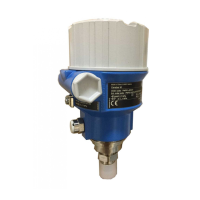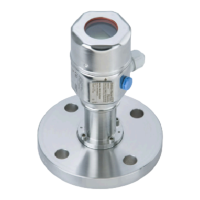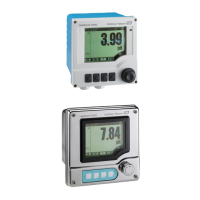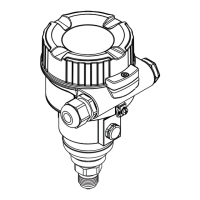Gammapilot M FMG60 PROFIBUS PA Commissioning
Endress+Hauser 49
One-point calibration
A one-point calibration can be performed if a two-point calibration is not possible. This means
that apart from the background calibration only one additional calibration point is used. This
calibration point should be as close as possible to the operating point. Densities in the
proximity of this calibration point are measured quite accurately, but the accuracy can
decrease as the distance from the calibration point increases. In one-point calibration, the
Gammapilot M only calculates the reference pulse rate I
0
. In this case, it uses the default value
µ = 7.7 mm
2
/g for the absorption coefficient.
Multiple-point calibration
Multiple-point calibration is recommended particularly for measurements in a large density
range or for particularly accurate measurements. Up to 9 calibration points can be used over
the entire measuring range. The calibration points should be as far apart as possible and
should be evenly distributed over the entire measuring range. Once the calibration points have
been entered, the Gammapilot M calculates the I
0
and µ parameters on its own. Multiple-
point calibration is recommended particularly for measurements in a large density range or
for particularly accurate measurements.
Recalibration
The Gammapilot M provides an additional calibration point (calibration point "10") for
recalibration. This point can be entered if the measuring conditions have changed, e.g. as a
result of deposit buildup in the measuring tube. Once the calibration point has been entered,
I
0
is recalculated according to the current measuring conditions. The absorption coefficient µ
from the original calibration remains unchanged.
Methods for entering the calibration points
Automatic calibration
In the case of automatic calibration, the calibration point in question is implemented on the
vessel or the measuring tube, i.e. the measuring tube is filled with a medium of the desired
density. The radiation remains switched off for background calibration, while radiation is
switched on for all other calibration points. The Gammapilot M records the pulse rate
automatically. The associated density is determined in the laboratory and entered by the user.
Manual calibration
In order to achieve a high level of measuring accuracy, it is advisable to determine the pulse
rates for several samples at a constant density and to calculate the average density and
average pulse rate for these samples. These values can then be entered manually in the
Gammapilot M. If possible, this procedure should be repeated at another density. The two
density values should be as far apart as possible.
The calibration date is not set automatically during manual calibration. It must be
entered by the user in the "Calibration date" (*C7) function.

